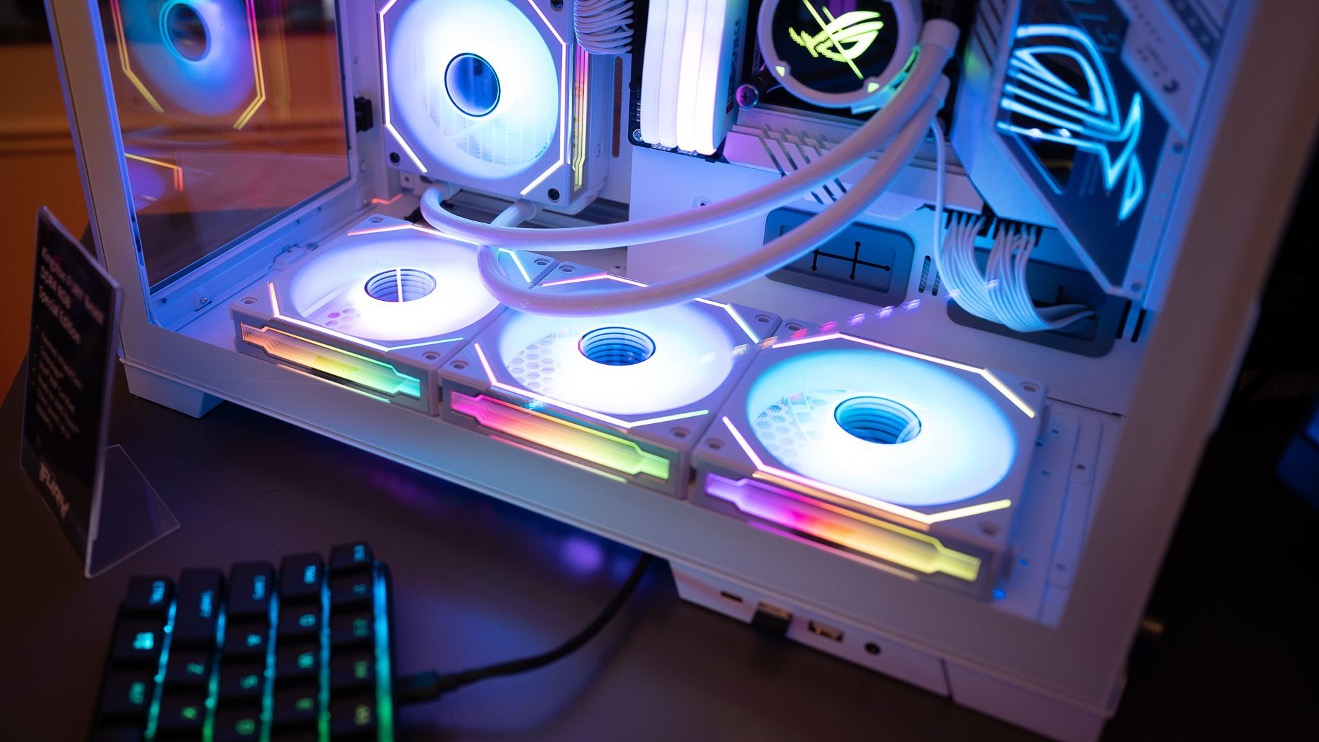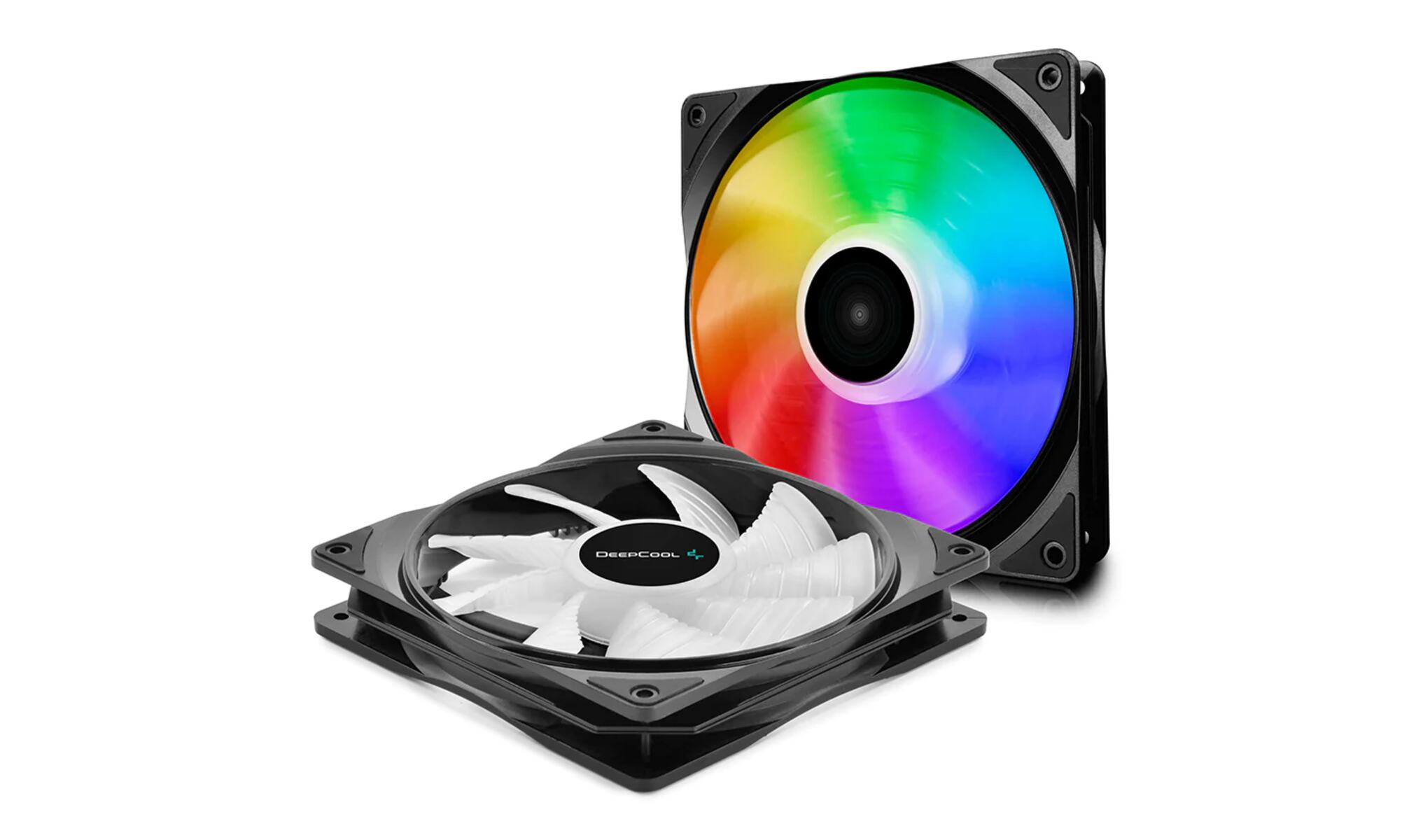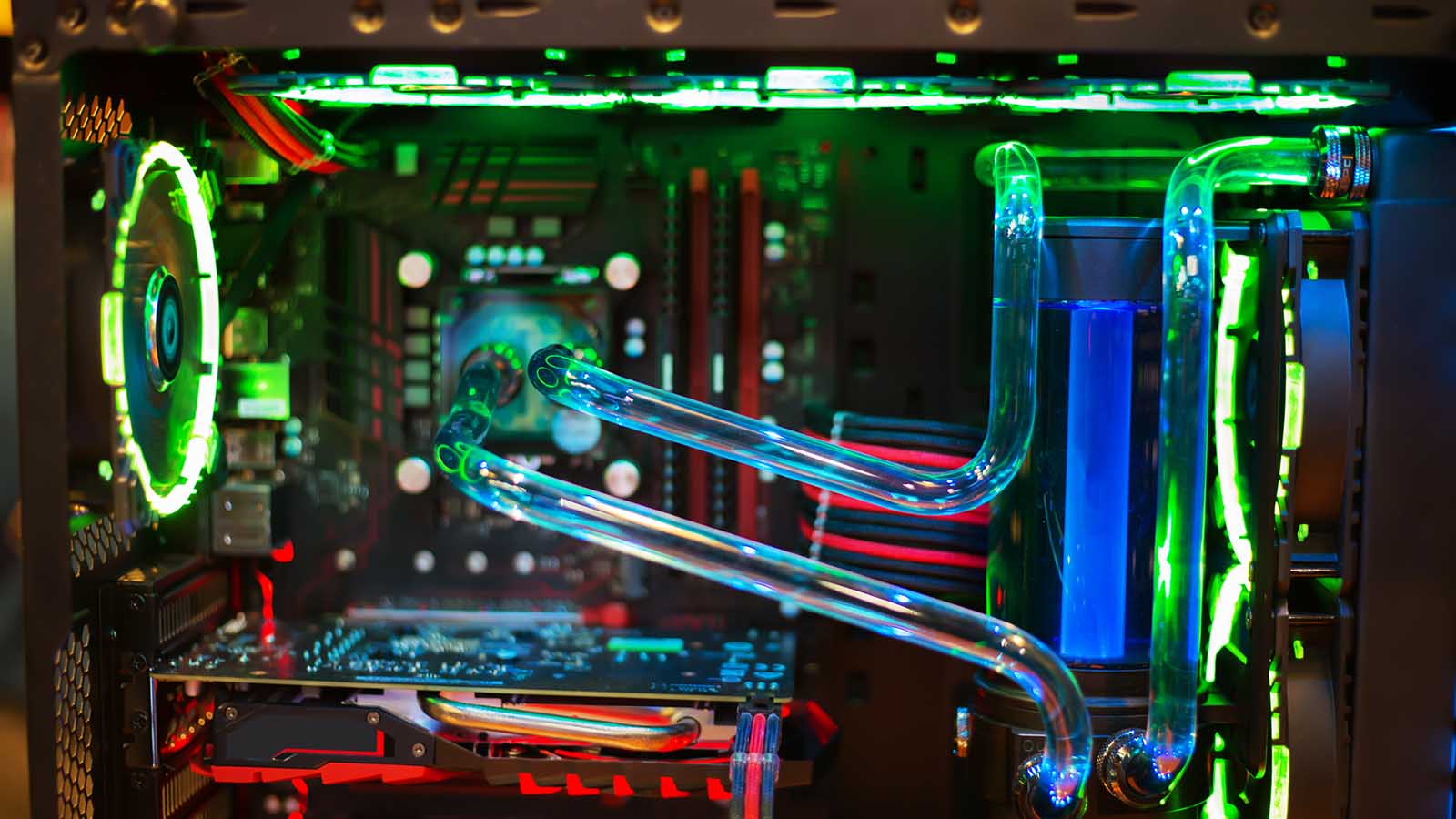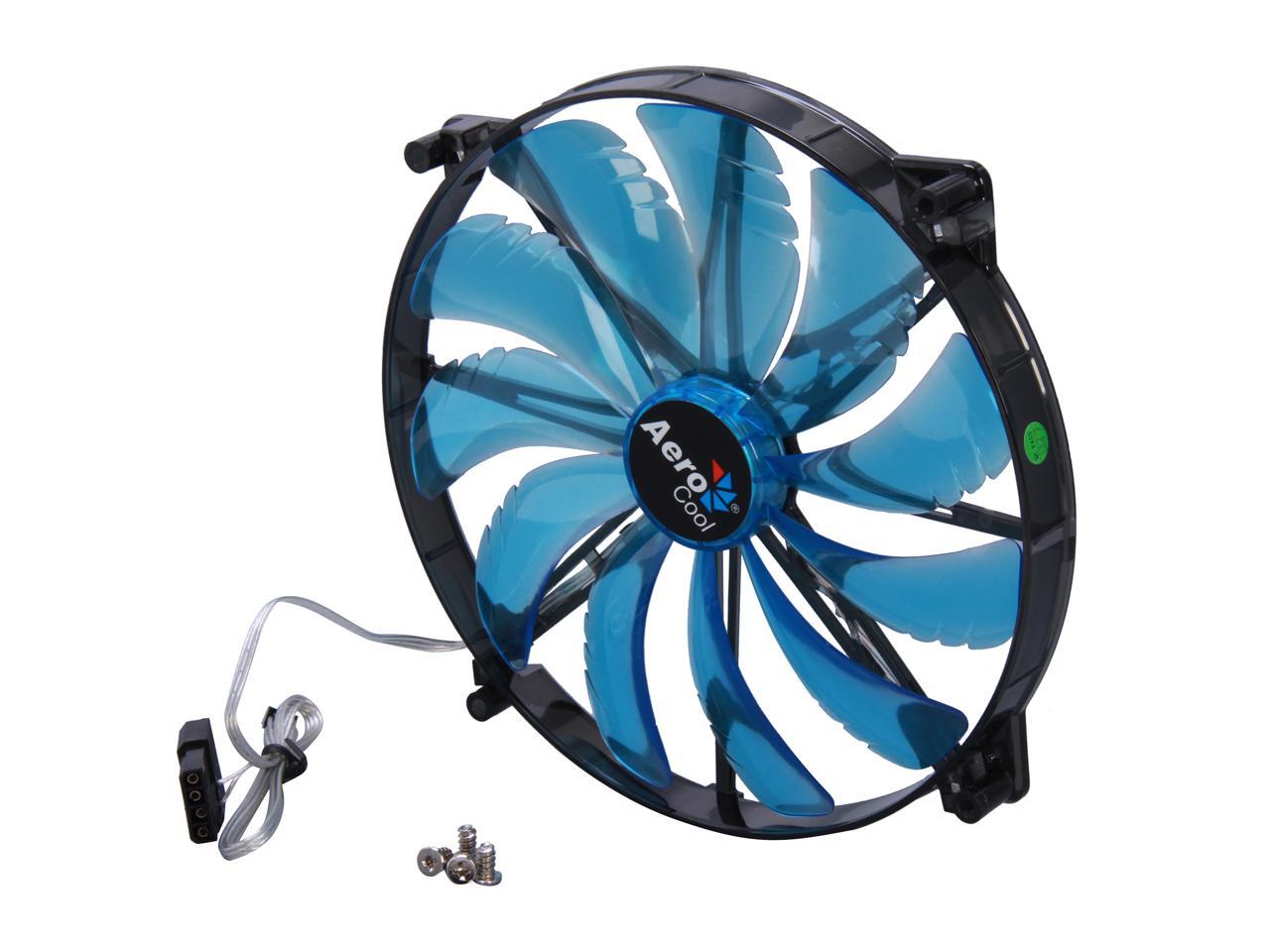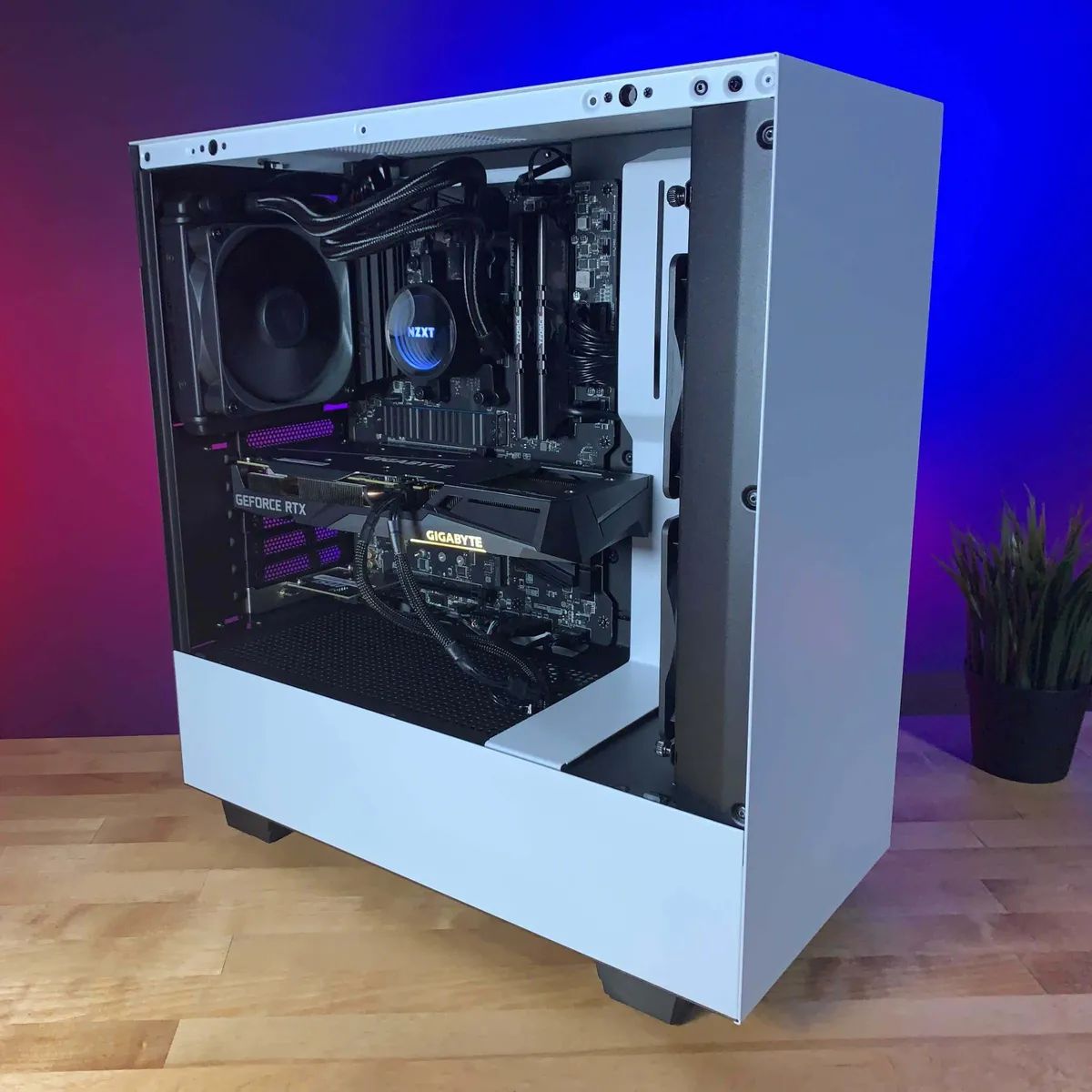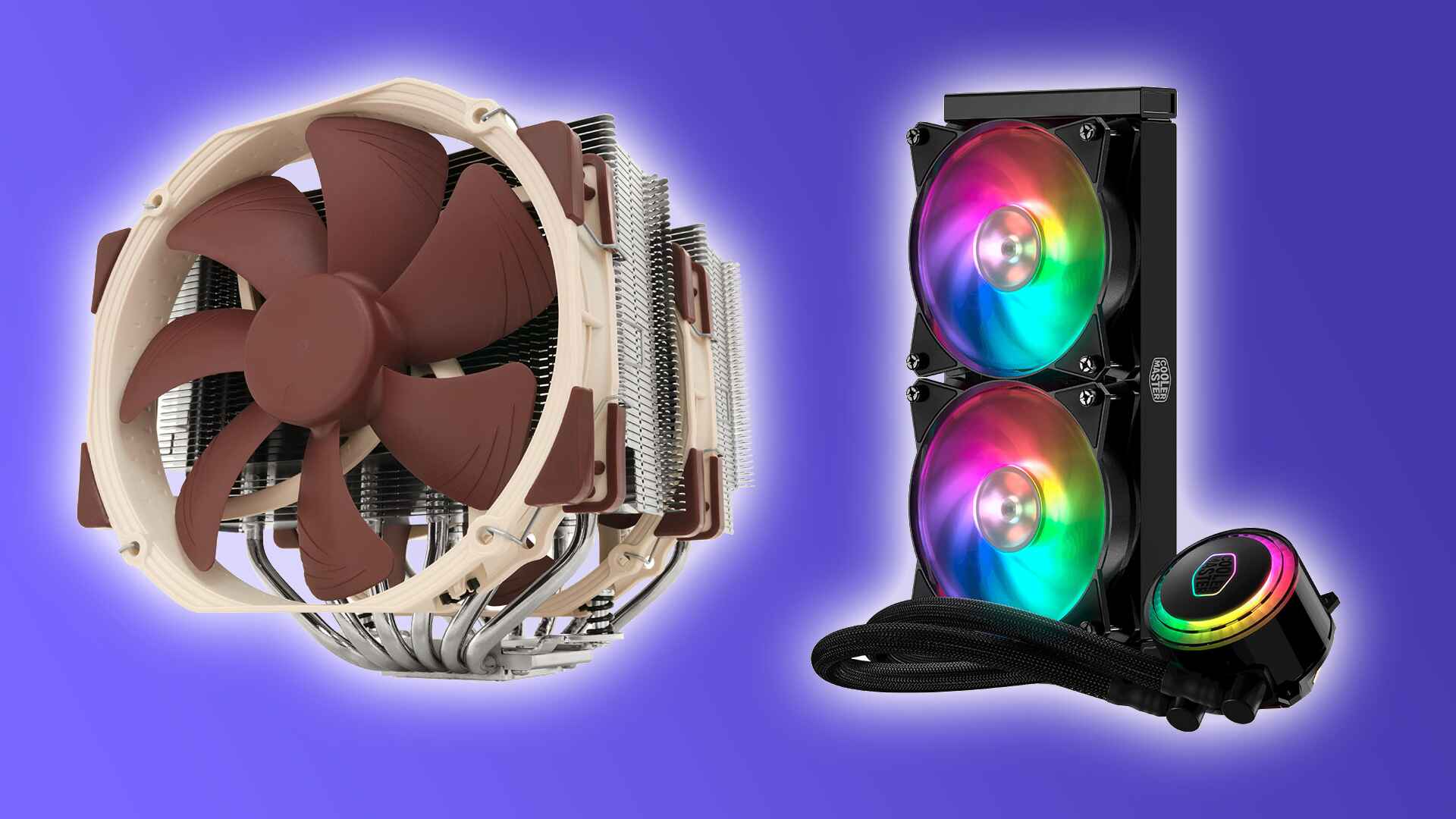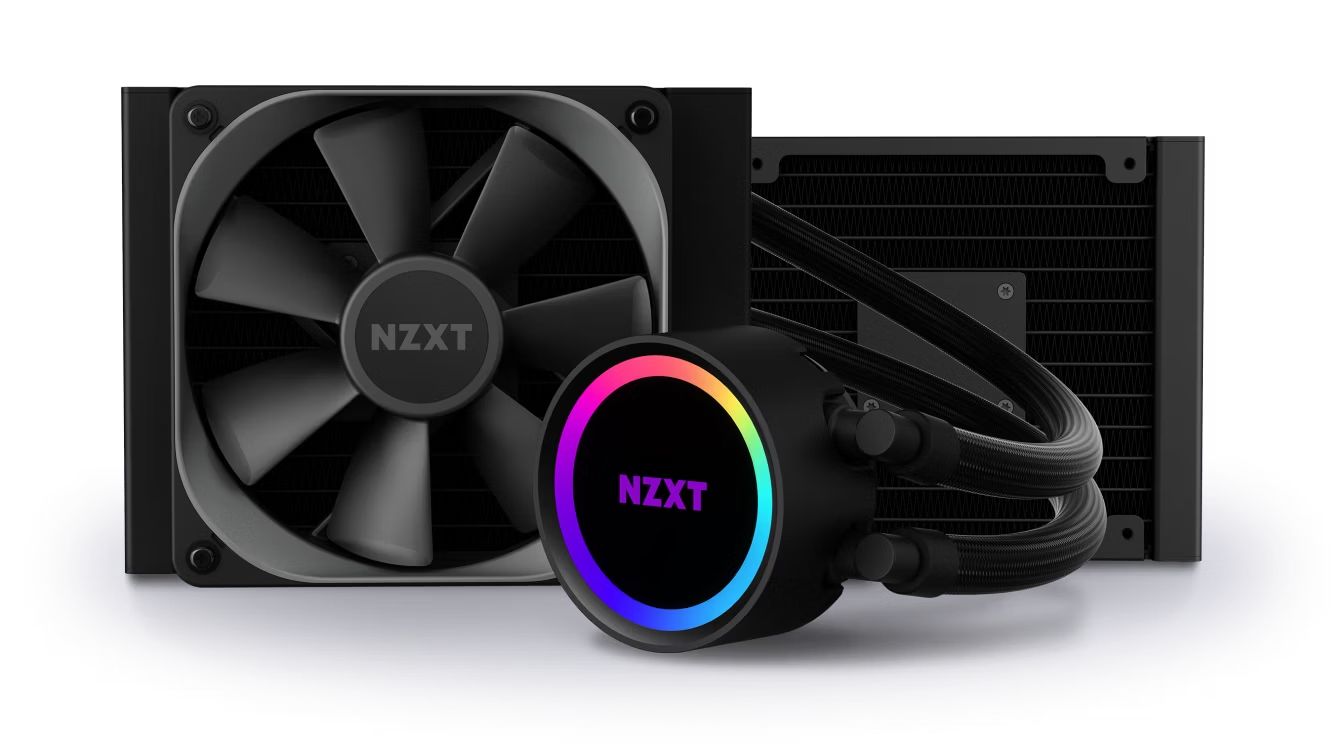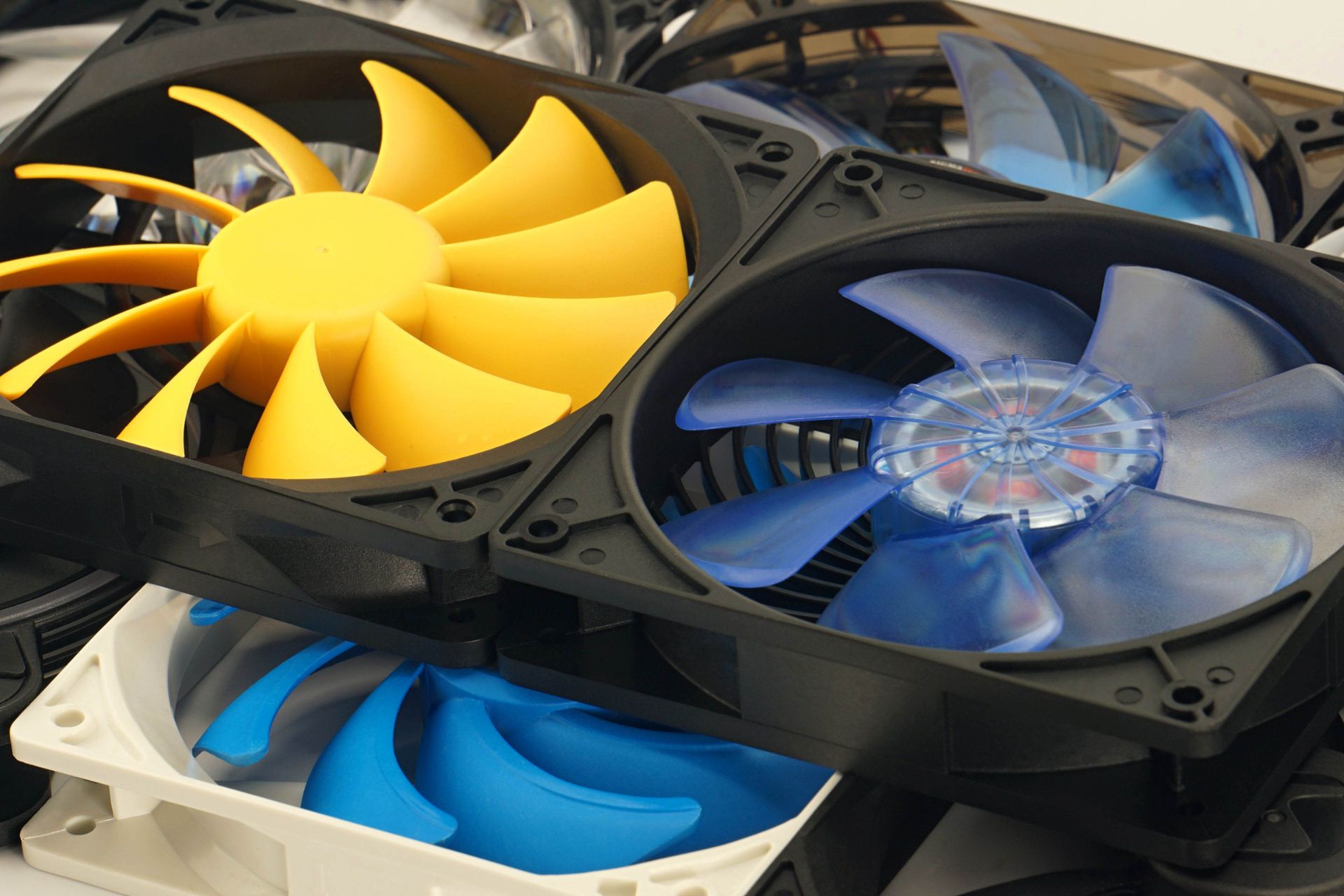Introduction
Fans play a crucial role in maintaining the cooling efficiency of a PC case. They help circulate air, prevent overheating, and ensure the smooth functioning of components. However, it’s essential to understand the flow direction of the fans to maximize their effectiveness. Knowing the correct orientation will help ensure that hot air is effectively exhausted, while cool air is efficiently drawn in.
Understanding fan flow direction may seem trivial, but it can have a significant impact on your computer’s overall performance and lifespan. Improper fan placement can lead to heat buildup, reduced cooling capacity, and potential damage to sensitive internal components. To avoid these issues, it’s important to determine the correct airflow direction of your PC case fans.
Fortunately, there are several methods you can use to determine fan flow direction. In this article, we will explore these methods in detail, guiding you through the process of identifying the correct airflow orientation for your PC case fans. Whether you’re a novice builder or an experienced enthusiast, this information will be invaluable in ensuring optimal cooling and system longevity.
So, let’s dive into the various methods to determine fan flow direction and ensure your PC’s cooling system is working at its best.
Why is fan flow direction important?
The flow direction of PC case fans plays a crucial role in maintaining efficient cooling and preventing the buildup of heat within the system. Understanding why fan flow direction is important will enable you to optimize your cooling setup and avoid potential issues with your computer.
Firstly, fan flow direction determines how effectively hot air is expelled from the system. PC components generate heat during operation, and if this heat is not properly dissipated, it can result in overheating and reduced performance. By orienting fans to push air out of the case, you create a pathway for hot air to escape, helping to maintain lower temperatures and preventing thermal throttling.
Secondly, the flow direction of fans impacts how efficiently cool air is drawn into the system. Cool air is vital for keeping components at optimal temperatures, as it helps dissipate the heat generated by the CPU, GPU, and other hardware. By positioning fans to intake air into the case, you can ensure a steady flow of fresh, cool air that can effectively cool down the components and maintain system stability.
Furthermore, the correct fan flow direction can contribute to a well-organized cable management system. When fans are positioned to create a linear airflow path, cables can be neatly arranged, avoiding obstructions to the airflow. This allows for better airflow through the case and helps in maintaining a cleaner and tidier build.
Additionally, knowing fan flow direction is essential when adding aftermarket coolers or water-cooling solutions. These cooling options often require specific fan configurations to optimize their efficiency. Understanding the correct airflow orientation will enable you to install and position the fans correctly, ensuring that the cooling solution functions as intended.
In summary, fan flow direction is important because it:
- Expels hot air from the system
- Draws in cool air to maintain optimal temperatures
- Contributes to a well-organized cable management system
- Ensures proper configuration of aftermarket coolers and water-cooling solutions
By understanding the significance of fan flow direction, you can make informed decisions when setting up your PC cooling system, ensuring optimal cooling performance and extending the lifespan of your components.
How to determine fan flow direction
Identifying the flow direction of your PC case fans is essential for optimizing cooling efficiency. Fortunately, there are several methods you can use to determine the airflow direction of your fans. Let’s explore these methods in detail:
Method 1: Look for airflow indicator arrows
Some PC case fans come with airflow indicator arrows printed on the fan frame. These arrows indicate the direction of the airflow. If your fans have these indicators, a quick look will reveal the correct flow direction. The arrow usually points towards the front of the fan, indicating the direction of air movement.
Method 2: Observe the fan blades
Take a closer look at the fan blades. Most fans are designed with angled blades that are curved or swept backward. The concave side of the blade is the side that aligns with the airflow direction. By observing the curvature of the blades, you can determine the correct flow direction. If the blades curve backward, the airflow is towards the front of the fan. Conversely, if the blades curve forward, the airflow is towards the back of the fan.
Method 3: Feel the airflow
If you’re unable to determine the flow direction visually, you can use the sense of touch to feel the airflow. Power on your computer and place your hand near the fan. You should feel air being blown out or drawn in. Based on the direction you feel the airflow, you can determine the flow direction of the fan.
Method 4: Check the fan specifications
If the above methods don’t provide a clear indication, referring to the fan specifications is a reliable way to determine the flow direction. Visit the manufacturer’s website or check the product manual for information on the fan’s specifications. Look for details such as the model number or part number, which can help you find the technical specifications. The specifications should mention the flow direction, indicating whether it is an exhaust or intake fan.
By utilizing these methods, you can confidently determine the flow direction of your PC case fans. Remember, the goal is to ensure that fans expel hot air and draw in cool air, optimizing the cooling efficiency of your system.
Method 1: Look for airflow indicator arrows
One of the simplest ways to determine the flow direction of your PC case fans is to look for airflow indicator arrows. Many fans come with these arrows printed on the fan frame, providing a visual cue for the airflow direction. This method is often the most straightforward and reliable way to identify the correct orientation of your fans.
To find the airflow indicator arrow, examine the fan carefully. It is generally located somewhere on the fan housing or the fan blade itself. The arrow points in the direction of the airflow, indicating whether the fan is meant to push air out or draw air into the system.
If you have multiple fans, pay attention to each fan’s arrow, as they may have different orientations. The arrows will help you properly position each fan for optimal airflow within your PC case.
Keep in mind that not all fans come with airflow indicator arrows. This is particularly true for older models or fans that are not specifically designed for computer cases. If you cannot locate an airflow indicator arrow on your fan, don’t worry – there are other methods you can use to determine the flow direction.
In summary, Method 1 involves looking for airflow indicator arrows printed on the fan housing or blade. If these arrows are present, they offer a simple and reliable way to determine the flow direction of your PC case fans.
Method 2: Observe the fan blades
Another method to determine the flow direction of your PC case fans is to observe the fan blades themselves. Fan blades are often designed with specific angles and curvature to guide the airflow in a particular direction.
Take a close look at the fan blades and examine their shape and curvature. Most fans have angled blades that are either curved or swept backward. These designs are meant to optimize airflow and enhance the fan’s performance.
To identify the flow direction using this method, look for the concave side of the fan blades. The concave side is the side that aligns with the airflow. By observing the curvature of the blades, you can determine the correct flow direction of the fan.
If the blades curve backward, meaning they are concave on the side facing the fan hub, then the airflow direction is towards the front of the fan. This indicates that the fan is designed to push air out of the system, expelling hot air from the case.
Conversely, if the blades curve forward, with the concave side facing away from the fan hub, then the airflow direction is towards the back of the fan. This indicates that the fan is designed to draw air into the system, bringing in fresh, cool air to cool down the components.
By observing the fan blades and identifying the concave side, you can confidently determine the airflow direction of your PC case fans. This method is particularly useful when airflow indicator arrows are not present or when dealing with older or non-specific computer case fans.
In summary, Method 2 involves observing the shape and curvature of the fan blades to determine the concave side. The concave side indicates the airflow direction, with curved backward blades expelling air and curved forward blades drawing in air.
Method 3: Feel the airflow
When visual cues are not available or clear, you can use the sense of touch to feel the airflow and determine the flow direction of your PC case fans. This method allows you to physically sense the direction in which air is being blown or drawn in by the fan.
To utilize this method, power on your computer and position yourself near the fan that you want to determine the airflow direction of. Place your hand close to the fan, but be cautious and avoid any moving parts to prevent any injuries.
Paying attention to the airflow, move your hand back and forth along the fan’s path. Depending on the direction you feel the airflow, you will be able to infer the flow direction of the fan. If you feel air being blown away from the fan, it is an exhaust fan pushing hot air out of the system. On the other hand, if you feel air being drawn towards the fan, it is an intake fan pulling in cool air into the system.
It is important to note that this method might not work well for fans with low airflow or fans that are obstructed by filters, grilles, or other components. In such cases, you may need to remove any obstructions temporarily to accurately feel the airflow.
This method is particularly useful when other identification methods, such as airflow indicator arrows or observing the fan blades, are not available or inconclusive. By feeling the airflow, you can confidently determine the flow direction of your PC case fans, ensuring proper fan placement for optimal cooling efficiency.
In summary, Method 3 involves feeling the airflow with your hand to determine the flow direction of your PC case fans. By sensing whether the air is blown away or drawn towards the fan, you can identify whether it is an exhaust or intake fan.
Method 4: Check the fan specifications
If other methods have not provided a clear indication of the flow direction, checking the fan specifications is a reliable way to determine the airflow orientation. The fan specifications provide detailed information about the fan’s design, including the intended flow direction.
To utilize this method, you need to access the fan’s specifications. This information can typically be found on the manufacturer’s website or in the product manual. Look for details such as the model number or part number of the fan, as these will help you locate the relevant technical specifications.
In the specifications, look for any references to the flow direction of the fan. Manufacturers often specify whether a fan is meant to be an exhaust fan, pushing air out of the system, or an intake fan, pulling air into the system. The specification should clearly state the intended flow direction.
Be sure to verify that the specifications you are referencing are for the exact model and version of the fan you have. Different fan models may have different flow directions, so it’s important to find the information specific to your fan.
Utilizing this method ensures that you have accurate and reliable information directly from the manufacturer. By following the specified flow direction, you can ensure that the fan operates as intended and contributes to optimal cooling performance.
In summary, Method 4 involves checking the fan specifications to determine the flow direction. By referring to the manufacturer-provided information, you can accurately identify whether the fan is designed as an exhaust or intake fan.
What to do if you can’t find the flow direction
In some cases, it might be challenging to determine the flow direction of your PC case fans using the methods mentioned above. However, there are still some steps you can take to find the flow direction when visual cues or specifications are not available or inconclusive.
One option is to consult the manufacturer’s support resources. Visit the manufacturer’s website or contact their customer support for assistance. They may be able to provide you with specific information regarding the flow direction of your particular fan model.
Another approach is to search for online resources or forums dedicated to your specific fan model or PC case. These communities often have experienced users who have dealt with similar fan configurations before and can provide valuable insights or documentation on the flow direction.
If you’re unable to find information from the manufacturer or online resources, you can try searching for fan reviews or unboxing videos. Sometimes reviewers or users will explicitly mention the flow direction of the fan during their assessments or demonstrations, which can help you determine the correct orientation.
If all else fails, you can perform a practical test to determine the flow direction. Disconnect any power source from the fan and temporarily place a lightweight item, such as a tissue or a small piece of paper, in front of the fan. Power on the fan briefly while observing the movement of the item. The direction in which the item is blown or drawn can indicate the flow direction of the fan.
Once you have determined the flow direction or have gathered enough information, make sure to mark the fans or take note of their orientation. This will help you avoid any confusion during the installation process or when making future adjustments to your PC case cooling setup.
In summary, when unable to find the flow direction using standard methods, consider reaching out to the manufacturer’s support, searching online resources or forums, looking for fan reviews or unboxing videos, and performing a practical test using a lightweight item. Through these steps, you can determine the flow direction and ensure proper placement of your PC case fans for optimal cooling performance.
Conclusion
Understanding the flow direction of your PC case fans is essential for optimizing cooling efficiency and maintaining the overall performance and longevity of your system. By following the methods outlined in this article, you can confidently determine the correct orientation of your fans.
Looking for airflow indicator arrows is a simple and reliable method. These arrows, if present, provide a visual cue indicating the airflow direction. Observing the fan blades is another effective way to identify the flow direction. By paying attention to the curvature of the blades, you can determine whether the fan pushes air out or draws air in. Feeling the airflow with your hand allows for a tactile approach. By sensing the direction of the airflow, you can determine whether the fan functions as an exhaust or intake. Checking the fan specifications is a reliable option, as it provides accurate manufacturer-provided information on the flow direction.
In situations where you are unable to find the flow direction using conventional methods, you can consult the manufacturer’s support resources, search online forums and communities dedicated to your fan model or PC case, or perform practical tests to determine the airflow direction.
Remember, proper fan orientation plays a vital role in maintaining optimal cooling, preventing overheating, and extending the lifespan of your components. By taking the time to determine the correct flow direction and ensuring proper fan placement, you can create an effective cooling system for your PC.
Keep in mind that maintaining proper airflow in your PC case involves more than just determining fan flow direction. Regular cleaning, managing cable clutter, and monitoring fan speeds are also important aspects of effective system cooling.
By applying the methods discussed in this article and maintaining a well-designed cooling system, you can keep your PC running smoothly and reliably, even during intensive tasks and gaming sessions.







